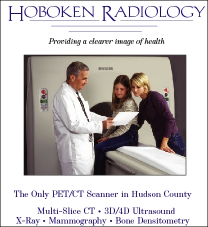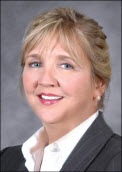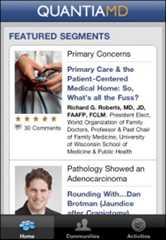News 3/26/09
From: Dr. Deborah Peel: "Re: health care information technology vendors’ ‘Hold Harmless’ Clause. Unlike most of what is written about HIT, this article reports on the reality that HIT creates new problems and risks for patients and new liabilities for clinicians. Congress’ and the public’s magical thinking that HIT is a silver bullet for everything wrong with the healthcare system can only be cured with factual information–in large doses. Ross Koppel examines the fact that HIT software inevitably has defects. The most severe defects can result in patient harms/deaths, but currently all software defects are being concealed." Unfortunately you have to be a JAMA subscriber to view the whole article, but Dr. Peel included an interesting quote by Koppel. "Vendors shifted liability to users and inserted other contractual language that effectively concealed from users the fuller knowledge of serious faults in their HIT systems. Those steps are both counterproductive and unethical. Reducing incentives for getting software right is neither a prescription for HIT health nor for lessened patient harm. Whether the industry is obliged to accept traditional liability, regulatory oversight, or both, restricting the hold harmless/learned intermediary clauses should help to speed the repair of faulty HIT."
The Madoff Ponzi scheme weaves its way into a radiology clinic as federal investigators attempt to return funds to investors. Five years ago, Madoff’s wife bought a 21% share of Hoboken Radiology (NJ) and the practice administrator now expects the federal government to seize Ruth Madoff’s portion.
The 50 radiologists at Northern Ohio Medical Specialists deploy eRAD’s RIS/PACS for its outpatient radiology center. eRAD replaced Evolved Digital Imaging’s discontinued solution.
KLAS is offering an EMR Toolkit to help providers make informed choices regarding stimulus-related technology decisions. The Toolkit includes ratings and analysis of the top EMR vendors for the inpatient and outpatient market. The kit is free to providers and available for a fee to the rest of us.
You can tell which vendors are hot by Googling them to check how many text ads display. eClinicalWorks seems to be the frontrunner with six, one of them, curiously, Microsoft.
A neurosurgeon in Naples, Italy has a heart attack while performing a brain operation. Claudio Vitale insisted on finishing the procedure, them immediately became a patient and underwent angioplasty surgery. Both the surgeon and his patient are recovering.
Sounds like a better outcome than a Beth Israel patient’s whose doctor fell asleep during surgery. The patient suffered complications following surgery for liposuction and a scar repair. The doctor, who has since been fired and has temporarily lost his state license, claims he had been up all night working on a book.
We’ve gotten several positive comments on the HITECH vendor executive series. It’s a fun read in a compelling, head-to-head format. We appreciate the participation of the executives involved. We have a final installment left to run on Friday.
iMedical and Imagetek team up to provide a scanning solution that allows users to automatically scan and store documents within iMedica’s PM/EMR application.
The visits and e-mail signups for HIStalk Practice have picked up nicely. Put your e-mail address in the Get Instant Updates box to your upper right and click Subscribe and you will know instantly when we’ve written something new. Thanks, too, to our sponsors.
Sage adds three more FQHCs to its client base, as the community health centers purchase Sage’s Community Health System management and EHR systems.
A new article in tomorrow’s NEJM concludes that putting more money into existing HIT may be the wrong approach for delivering long-term benefits. Instead, the authors recommend that HHS mandate development of a new platform that will support a variety of individual applications, making the data "liquid" and providing an easy way for providers to change systems. Good authors: Kenneth Mandl and Isaac Kohane, both MD/PhDs from Children’s Hospital Boston’s informatics programs. Sorry, no link yet since the press release just came out.
The former chief of staff of Anaheim Memorial Medical Center is sued by the MGM Grand over $2.9 million worth of unpaid gambling markers extended to him at the casino.
Three Tuscon cardiologists agree to pay the federal government $355,000 to settle Stark violations. Apparently the physicians were not aware of they were violating any laws until several months after they opened a nuclear imaging practice, to which they referred patients. Once the doctors realized the problem, they reported themselves to the federal government. The doctors say that before opening the practice, they consulted a lawyer. Apparently the lawyer needs some CLEs on healthcare.
After the sudden closure of a county-run nonprofit clinic in California, patients are left scrambling for alternative medical providers, as well as for their medical records. Last week, Coastside Family Medical Center went bankrupt and closed its doors. Many of the clinic’s uninsured and Medicare patients are having difficulty finding new doctors. Meanwhile, the bankruptcy trustee is taking custody of medical records and not releasing them until requested by a new physician. In other words, patients appear to be unable to take custody of their own records. So, who exactly owns a patient’s medical record?
Speaking of, faculty members from Wake Forest and Duke University collaborate on a commentary that stresses the need to clarify the legal ownership of patient records. In order to make use of potentially valuable clinical data for medical research or improving patient outcomes, regulators must create a new system of patient-initiated control of health records.
One in five American workers are uninsured, according to a new study, a big jump from the one-in-seven number of the mid-1990s. Also, insurance costs have increased 61%, while wages are up only 10%.
Earlier this week we asked if physicians really have time to use all these cool new smart-device applications being introduced. This article suggests that these products have potential to "overhaul the way physicians and hospitals dispense health care." Perhaps, but we tend to agree with John Q Seriously who pointed out that desktops are today pervasive in both hospitals and clinics and offer a much more efficient workflow than even the fastest iPhone.

















The article about Pediatric Associates in CA has a nugget with a potentially outsized impact: the implication that VFC vaccines…